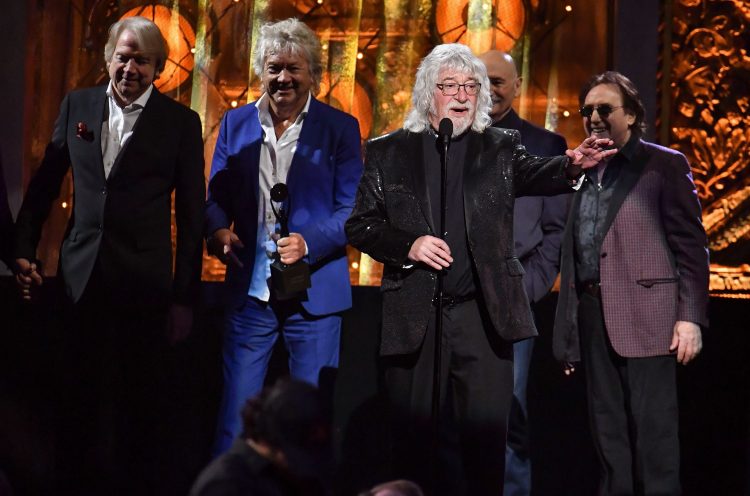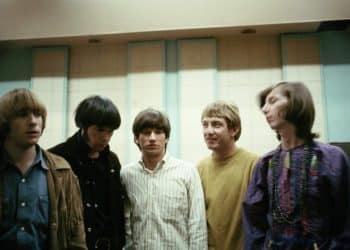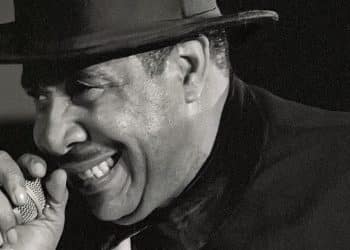When it comes to blending rock with symphonic grandeur, poetic lyrics, and mind-expanding themes, few bands have done it like The Moody Blues. Pioneers of progressive rock and masters of musical atmosphere, this iconic British band took listeners on a sonic journey through space, time, and the depths of the human spirit. In this article, we’re counting down the Top 10 Most Popular The Moody Blues Songs of All Time—a timeless collection of tracks that showcase the band’s dreamy melodies, philosophical depth, and unmatched innovation.
From the haunting beauty of “Nights in White Satin” to the cosmic adventure of “Ride My See-Saw,” The Moody Blues crafted songs that weren’t just music—they were experiences. Fusing rock with orchestral arrangements and lyrical introspection, they created a sound all their own—one that continues to resonate with fans across generations.
Whether you’re a longtime devotee of their psychedelic symphonies or just discovering their rich catalog, this list will transport you to the heart of a band that dared to dream beyond the limits of traditional rock. So close your eyes, open your mind, and get ready to explore the melodies that made The Moody Blues true legends of progressive sound.
1. Go Now (1965)
“Go Now” marked The Moody Blues’ first major hit in 1965, showcasing their early R&B roots. Sung with passion by Denny Laine, the song is a poignant breakup ballad about heartache and separation. Its soulful, piano-driven melody and heartfelt vocals propelled the band to international fame and solidified their place in the British Invasion. Although stylistically different from their later, more orchestral work, “Go Now” remains a beloved classic. Its emotional depth and the raw energy in Laine’s delivery highlight the band’s versatility, showcasing their ability to connect with listeners through both their early R&B influences and their later, more experimental sound.
2. Nights in White Satin (1967)
Widely regarded as The Moody Blues’ signature song, “Nights in White Satin” is a timeless masterpiece of symphonic rock. First released in 1967 as part of their groundbreaking album Days of Future Passed, this haunting ballad delves into themes of unrequited love and longing. Written by Justin Hayward at just 19 years old, the song captivated audiences with its lush orchestration and deeply emotional delivery. The dramatic use of the Mellotron, combined with sweeping strings from the London Festival Orchestra, creates an ethereal atmosphere that still resonates today. The spoken-word segment, “Late Lament,” adds an extra layer of philosophical depth, making it not just a love song, but a meditation on the passage of time and human experience. Its haunting beauty and emotional power have made it an enduring classic that continues to be cherished by generations of listeners.
3. Legend of a Mind (1968)
A tribute to Timothy Leary and the psychedelic counterculture, “Legend of a Mind” from In Search of the Lost Chord is one of The Moody Blues’ most iconic tracks. Written by Ray Thomas, the song’s swirling flute solos and expansive orchestration perfectly encapsulate the spirit of the late 1960s. Its lyrics, celebrating the mind-expanding potential of LSD, remain a quintessential example of the band’s psychedelic phase. Released in 1968, the track’s dreamy, experimental nature and philosophical musings made it a standout in their catalog, and its exploration of altered consciousness continues to make it a favorite among fans of the era.
4. I’m Just a Singer (In a Rock and Roll Band) (1972)
In stark contrast to much of the introspective and orchestral material in their catalog, “I’m Just a Singer (In a Rock and Roll Band)” from Seventh Sojourn is a lively rock anthem that celebrates The Moody Blues’ role as entertainers. Written by John Lodge, the track features a driving beat, energetic vocals, and an infectious chorus. The song’s upbeat and straightforward nature made it one of the band’s biggest hits when it was released in 1972, providing a burst of energy and enthusiasm to their catalog. Its bold, rock-driven sound became a staple of the band’s live performances, proving that The Moody Blues were just as capable of producing high-energy rock as they were of crafting symphonic ballads.
5. Your Wildest Dreams (1986)
Released in 1986 on The Other Side of Life, “Your Wildest Dreams” marked a successful return for The Moody Blues in the 1980s. With its sleek synth-driven sound and polished production, the track captures the bittersweet nostalgia and longing for lost love. Written by Justin Hayward, the song blends the band’s signature emotional depth with contemporary 80s production techniques. Its relatable themes of remembering a past love, combined with a catchy, synth-laden melody, helped it become a chart-topping success. The song’s ability to evoke a sense of yearning and wistfulness, while appealing to a new generation of fans, solidified its place in the band’s later catalog and introduced their timeless sound to a whole new audience.
6. Isn’t Life Strange (1972)
From Seventh Sojourn, “Isn’t Life Strange” is a contemplative epic that explores the mysteries and ironies of existence. Written by bassist John Lodge, the song features a lush choral arrangement, a rich use of acoustic guitars, and a signature Mellotron melody that creates a sweeping, grandiose soundscape. Its introspective lyrics reflect on the unpredictable nature of life, evoking both wonder and melancholy. Released in 1972, the song’s thoughtful tone and orchestral grandeur highlight The Moody Blues’ ability to craft deeply emotional music that resonates with listeners on a profound level. With its timeless themes, “Isn’t Life Strange” remains a fan favorite for its reflective nature and musical sophistication.
7. Question (1970)
As the lead single from A Question of Balance, “Question” is a stirring and introspective anthem that explores existential themes and the search for truth. Written by Justin Hayward, the song’s emotional dynamics alternate between fiery, fast-paced verses and a slower, more tender chorus. The lyrics grapple with uncertainty and the human quest for meaning, reflecting the turbulence of the 1970s. The song’s unmistakable acoustic guitar intro sets the tone for the emotional journey that follows, while the raw energy and vulnerability of the track make it one of the band’s most enduring works. Released in 1970, “Question” remains a powerful reflection on life’s deeper questions, resonating with listeners who continue to seek answers in an uncertain world.
8. Tuesday Afternoon (Forever Afternoon) (1967)
Another standout from Days of Future Passed, “Tuesday Afternoon” takes listeners on a serene journey through a moment of reflection. Written by Justin Hayward, the song beautifully captures the tranquility and joy of a peaceful afternoon. With its evocative lyrics and a seamless blend of acoustic guitar and orchestral elements, the track is a perfect example of the band’s signature fusion of rock and classical music. The lush Mellotron strings create a dreamy ambiance, while the transitions between the softer acoustic verses and grand orchestral crescendos highlight the band’s innovative approach to songwriting. “Tuesday Afternoon” became a fan favorite thanks to its uplifting tone and vivid imagery of nature, and it still feels just as fresh and inspiring today as it did in 1967.
9. Ride My See-Saw (1968)
A high-energy track that contrasts sharply with the more orchestral sounds The Moody Blues were known for, “Ride My See-Saw” was released as a single from In Search of the Lost Chord in 1968. Written by bassist John Lodge, this psychedelic anthem captures the spirit of adventure and self-discovery that defined the late 1960s. The song’s driving rhythm and infectious chorus make it a standout, while the lively guitar riffs and spirited vocals energize the listener from start to finish. Unlike much of the band’s more reflective work, “Ride My See-Saw” is upbeat and anthemic, with philosophical undertones about the search for meaning and fulfillment. Its energetic nature and vibrant sound have made it a fixture in the band’s live performances, resonating with audiences for decades.
10. The Story in Your Eyes (1971)
From the Every Good Boy Deserves Favour album, “The Story in Your Eyes” is a fiery, rock-driven anthem that demonstrates The Moody Blues’ ability to blend profound themes with electrifying instrumentation. Written by Justin Hayward, the song features powerful guitar riffs, soaring harmonies, and introspective lyrics that explore love and human connection. The urgency and passion of the track set it apart from other songs in their catalog, making it a fan favorite since its release in 1971. Its energetic pace and dynamic shifts between quiet verses and explosive choruses encapsulate the band’s ability to evoke intense emotion through music, making it a standout in their discography.









